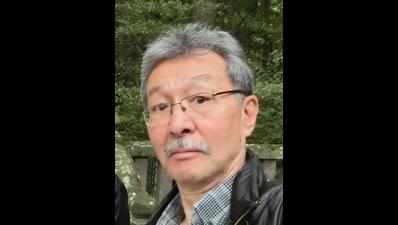- News
- City News
- ahmedabad News
- Track-toring change
Trending
This story is from September 9, 2018
Track-toring change
When in 1984, Takashi Shinoda, a young Japanese economist interested in developing economies landed in India, he started studying Kankarvadi, a small village near Viramgam, Ahmedabad district, as a typical Gujarati hamlet. The village was primarily agrarian – depending on farming and livestock. It had strong inter-community ties and was very small – having only 106 families – which made it possible for Shinoda to know every inhabitant.

When in 1984, Takashi Shinoda, a young Japanese economist interested in developing economies landed in India, he started studying Kankarvadi, a small village near Viramgam, Ahmedabad district, as a typical Gujarati hamlet. The village was primarily agrarian – depending on farming and livestock. It had strong inter-community ties and was very small – having only 106 families – which made it possible for Shinoda to know every inhabitant.
When in 1984, Takashi Shinoda, a young Japanese economist interested in developing economies landed in India, he started studying Kankarvadi, a small village near Viramgam, Ahmedabad district, as a typical Gujarati hamlet. The village was primarily agrarian – depending on farming and livestock. It had strong inter-community ties and was very small – having only 106 families – which made it possible for Shinoda to know every inhabitant.
"What started as a one-off project to understand how village economy works kept on stretching, as I got interested to track the changes over the years. And the changes are indeed startling," said Shinoda, professor of economics at Japan’s Daito Bunka University. His observations of three decades appeared as a study, ‘Thirty Years of a Gujarat Village Economic and Social Change (1984-2015).’
Shinoda commented that the most obvious change he had observed was in the village’s relationship with livestock and farming technology.

As the dependence on animals reduced, the Bharwad community which was required for taking the animals out for grazing and also for providing bulls for insemination lost importance. Changes in farming technique reduced that dependence.
The other significant change Shinoda observed was in the relationship between different communities. The village has Noroda Rajputs as primarily landholders. Dalit community members were working as farm labourers three decades ago. The labourers were dependent on the landholders for borrowing money which they used to pay with labour in lieu of food, tea and a bidi a day.
"What started as a one-off project to understand how village economy works kept on stretching, as I got interested to track the changes over the years. And the changes are indeed startling," said Shinoda, professor of economics at Japan’s Daito Bunka University. His observations of three decades appeared as a study, ‘Thirty Years of a Gujarat Village Economic and Social Change (1984-2015).’
Shinoda commented that the most obvious change he had observed was in the village’s relationship with livestock and farming technology.

Villagers showing different land measures
"When I started my study, the number of bullocks was 72, which by 2002 had dropped to zero. During the same period, the number of tractors went up from four to 28. Cows, the primary milch animal, were replaced by more productive buffalo. The existing cows are primarily mixed-breed with more produce," he said, adding that the importance of animals reduced further with use of fuel other than cow-dung cakes.
As the dependence on animals reduced, the Bharwad community which was required for taking the animals out for grazing and also for providing bulls for insemination lost importance. Changes in farming technique reduced that dependence.
The other significant change Shinoda observed was in the relationship between different communities. The village has Noroda Rajputs as primarily landholders. Dalit community members were working as farm labourers three decades ago. The labourers were dependent on the landholders for borrowing money which they used to pay with labour in lieu of food, tea and a bidi a day.
End of Article
FOLLOW US ON SOCIAL MEDIA










